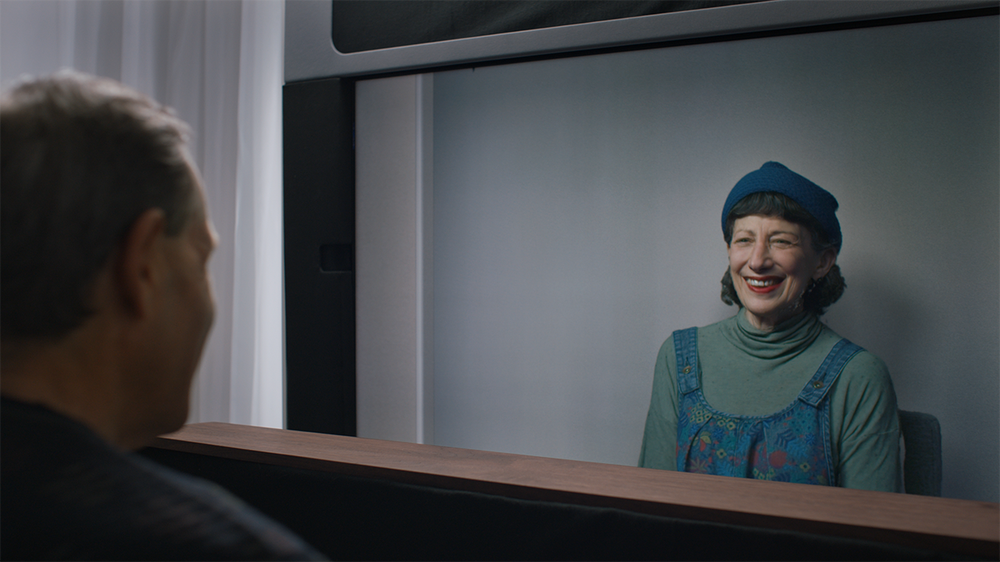While Meta attempts to persuade users to don its VR headsets and join the metaverse, Google continues experimenting with a different kind of fake reality: Project Starline, their holographic video chat project. Project Starline is a video-calling booth that uses 3D imaging, high-resolution cameras, unique depth sensors, and an innovative light field display to give callers on both sides of the screen a realistic experience without a headset.
Google has disclosed that it is expanding its real-world testing with an early access program that will see Starline utilized in the offices of several industry partners, including Salesforce, WeWork, T-Mobile, and Hackensack Meridian Health.
Google will start sending Project Starline prototypes to certain partner offices later this year so that they can be tested regularly.
See also: Amazon’s Alexa on Wheels Sparks Fresh Concerns About Privacy
The Beginning of the Journey
The 3D calling booths used to be at Google's U.S. headquarters, where employees could use them for meetings, onboarding new employees, and other things. The company also invited more than 100 corporate partners from fields like media, healthcare, and retail to its headquarters so they could try out the technology and give feedback.
With the new early access program, these partners can test the calling booths at their offices. This will give Google important feedback and information about how a device like this might be utilized in the real world and what problems it might run into.
People who have tried Project Starline say that it feels very real and that the technology, especially in its early stages, is amazing.
There have been uncertainties as to whether Starline would ever be more than a really impressive technical demonstration, let alone a technology that would become a part of office employees' and customers' daily lives. (They can also support more than Starline's one-on-one discussions.) In a world where Zoom and Google Meet are considered "good enough" solutions for virtual meetings, it is unclear whether Google plans to commercialize the technology, how much these calling booths would cost businesses to purchase and maintain, and whether there is sufficient demand for the technology.
Even some Google employees didn't know if Project Starline was still running, given the situation. Furthermore, it's not evident what will happen to Project Starline at Google in the long run since the project ended a year ago as part of a reorganization that put Google's many AR and VR technologies, as well as its internal research and development department called Area 120, under a new "Labs" unit. In September of this year, Google halved the number of initiatives in Area 120, indicating that it may not see such trials as a priority in the present economic climate.
Understanding Starline’s Technology
Starline's technology is an interesting bet on a new kind of "virtual" reality in which people are shown not as avatars like in video games but as themselves. Instead of developing technology that uses cameras to track eye and face movements to create more realistic avatars, as Meta is currently doing, or figuring out how to add legs to your virtual reality body, Google is working to present a person as they are, without the added burden of having to wear something on your head.
Starline could help bridge the gap between in-person meetings and the less-than-ideal 2D video chats we have now as more and more companies try to figure out how the future of work will be a mix of the two.
WeWork and Salesforce have expressed interest in testing the technology, which they believe will enable more meaningful human relationships.
Andy White, SVP of Business Technology at Salesforce, said, "In today's digital-first world, firms must provide workers with the technology and tools they need to be more productive and efficient at work." "At Salesforce, we're always looking for new ways to give our employees and customers worldwide amazing experiences. By combining real-world and virtual experiences, Project Starline could help people get along better.
Google said it would publish more information about its early access program next year.
Featured image: Google
Subscribe to Whitepapers.online to learn about new updates and changes made by tech giants that affect health, marketing, business, and other fields. Also, if you like our content, please share on social media platforms like Facebook, WhatsApp, Twitter, and more.

